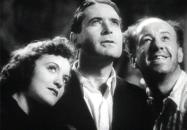 507744890998797796.jpg
507744890998797796.jpg
 507744890998797796.jpg
507744890998797796.jpg
Loosely based on the novel by Australian author F. J. Thwaites, The Broken Melody concerns John Ainsworth, a talented violinist and university teacher whose life and career begin to spiral out of control in the aftermath of a nightclub brawl. He eventually becomes penniless, and without any prospect of employment is forced to drift about Sydney as a vagabond. After he prevents an equally impoverished girl, Ann, from attempting suicide, she encourages him to begin playing his violin again. He then progresses from busking on street corners to playing in a cabaret club, where he eventually comes to the attention of a French entrepreneur. Ainsworth is sent to England where he finds success and fame as a conductor and composer. He later returns to Australia in order to tour his own opera. One night, the company's fiery soprano refuses to sing and her understudy is rushed on stage. It is Ann, whom John instantly recognises, and thus the pair are happily reunited.
Although the film is essentially a 'high drama,' Ken G. Hall infused the narrative with occasional light comic touches, in addition to moments of deliberate sentimentality (including [for example] a death-bed reunion between John and his dying father). Much of the comedic moments fell to veteran variety artist Alec Kellaway who played Joe, a genial pickpocket.
Further reference: